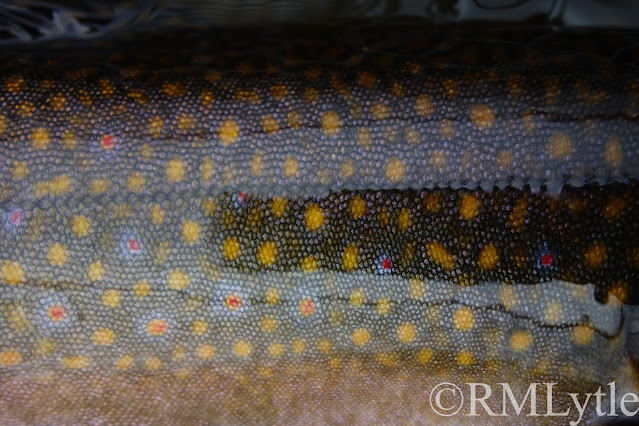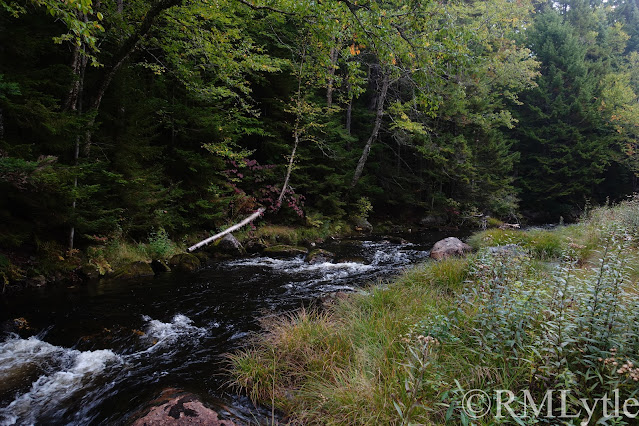One of the most noteworthy occurrences in local saltwater fishing this past season was the return of Atlantic mackerel to Long Island Sound and surrounding areas. Historically, mackerel have been present at various times and life stages, from tinker mackerel that were present in shore-accessible locations in the western sound to large "horse mackerel" roving the deeper water. There's been a distinct lack of mackerel activity in the Sound for many years. That is, until 2022.
In the spring there was an awesome striper bite in The Race. One day my buddies Joe and Jerry invited me out to get on the action. Sand eels were fueling this activity, with the bass averaging toward the low end of the slot. Birds were diving and fish were hammering heavy jigs as well as flies fished on depth charge sinking lines. The surprise of the day, though, was an adult mackerel that took my big sand-eel Jiggy. The fly was large, even for a full grown mackerel. That fish, which I noted with some surprise, served as a quiet precursor to what would transpire later in the season.
In early August, Noah and I headed out to ply the warm summer water, again focusing on The Race and surrounding zones. Initially, we focused on bottom fish. We raked up a healthy number of big scup and black seabass before deciding to go look for big striped bass. We didn't find them. Instead, we encountered acres upon acres of tiny Atlantic mackerel. They were feeding at the surface on minuscule baitfish- like a blitz in miniature, only that blitz would cover many square miles when scaled up. There must have been a few hundred thousand of the little mackerel out there. I was able to catch quite a few on small flies, and though most would scoff at the idea of trying to catch these tiny fish they meant something to me. Each was a shimmering, flopping, colorful ray of hope in my hand.
In the following weeks, these fish would spread, with reports as far west as the Norwalk Islands. My friend Ian Devlin sent me photos of tinker mackerel from his local waters, an area he hadn't seen the species for many years. They had once been a staple fishery, with angler using sabiki rigs to catch the small fish either for use as bait or to bring home and eat. Mackerel are very enjoyable table fare, with good flavor and fairly flaky texture. Of course there was more meat on the larger adults. Mark Sedotti told me about catching these bigger macker in his younger days, some weighing a few pounds.These were around earlier in the year and were present in deeper water, like the individual I'd caught earlier in the spring. Regardless of size, it seemed mackerel were back in the sound! They lingered at least until early December, with anglers going out into the western sound encountering them on sabikis intended to catch Atlantic herring.
This lead to some interesting questions. For a long time many of us had thought that warming water played a factor in the Atlantic mackerel's choice to abandon the Sound. But when they arrived in CT in 2022, it was mid summer and water temperatures were quite high. Their presence coincided with that of banded rudderfish and Spanish mackerel, notoriously warm water species. If the mackerel were tolerating temperatures in 70's now, warm water couldn't really account for their absence in previous years. Charles Witek pointed out to me that overfishing was likely the cause for the absence of Atlantic mackerel in our waters in recent years- we are at the periphery of their range, and therefore more likely to lose them when overfishing is occurring. I think he's most certainly right, but why the abundance this year? And how could we keep them coming back.
First of all, I must say that I do not know the answer to the question with certainty, I merely have a hypothesis. In March of 2022, the Canadian Federel Fisheries Minister announced an emergency closure on the commercial and bait mackerel fishery in Atlantic Canada and Quebec. Obviously such a closure would have notable impacts on the Canadian mackerel abundance, but I feel there is a chance it could impact our numbers as well. Mackerel are a fast growing and rapidly breeding species, maturing at about 2 years, with individual females releasing as many as 450,000 eggs in a season. In such species, fisheries closures show fairly abrupt results. I don't think our fish came from Canada, necessarily, but a sudden increase can move biomass around, perhaps shifting the southern extent further out to compensate for the new abundance. If this closure ends and suddenly the local mackerel vanish in turn, that would be very suggestive. Only time will tell.
Really, that is somewhat of a shot in the dark, but that I'm aware of there haven't been any other significant closures or policy changes to or affecting the mackerel fishery that could have an impact on our numbers.
Secondarily, this may be a flash in the pan, driven by some natural course of events related to current, water temperature, or weather that doesn't happen every year. It may have nothing to do with an increased population at all. In that case, we can't expect them to return next year. I for one am extremely curious and excited to see if they do. Mackerel provide another forage fish for a variety of species, and history tells us they should be here. So to that second question, how can we keep them coming back? Well, we can advocate for more restrictive regulations on the commercial fishery. This is one of those cases where the commercial fishery take is leaps and bounds more impactful than the modest recreational take. I take part in that recreational take. In Rhode Island, a modest and seasonal hook and line mackerel fishery exists that I quite enjoy. Participants are often not English speaking, so it's hard to gather opinions, but this season I struck up conversation with folks when I could and was surprised by how much the sentiment leaned towards curbing harvest. In a fishery dominated by anglers hoping to fill the freezer, I was surprised by how many supported a curb on the commercial take. Some of these anglers were even commercial fisherman earlier in their lives. The general idea expressed was that there are far fewer mackerel than there used to be, that they aren't around for as long as they used to be, and that commercial quotas are too high. NOAA placed the Atlantic mackerel cap at 4,963 metric tons for the 2022 season.
Unfortunately it may not be particularly easy to drive change with so little supporting voices. The recreational fishery, especially this far south, is tiny, and hardly and economic driver. Mackerel also have been gone from the broader area for long enough that most anglers don't really feel their absence, in fact many have no idea they were ever there in the first place. This is one of the largest hurdles in species restoration. Most people don't care about mackerel in Connecticut, Rhode Island, or New York. They don't even know what one looks like. So how do we pull enough voices together? It feels like an impossible task. That said, if you weren't aware of the history and predicament, now you are. If you want to share that knowledge I'm certainly not going to stop you.
Thank you to my Patrons; Erin, David, John, Elizabeth, Brandon, Christopher, Shawn, Mike, Sara, Franky, Geof, Luke, Noah, Justin, Sean, Tom, Mark, Jake, Chris, and Oliver for making Connecticut Fly Angler possible. If you want to support this blog, look for the Patreon link at the top of the right side-bar in web version.




























































